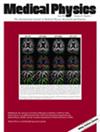T1-contrast enhanced MRI generation from multi-parametric MRI for glioma patients with latent tumor conditioning
Abstract
Background
Gadolinium-based contrast agents (GBCAs) are commonly used in MRI scans of patients with gliomas to enhance brain tumor characterization using T1-weighted (T1W) MRI. However, there is growing concern about GBCA toxicity. This study develops a deep-learning framework to generate T1-postcontrast (T1C) from pre-contrast multiparametric MRI.
Purpose
We propose the tumor-aware vision transformer (TA-ViT) model that predicts high-quality T1C images. The predicted tumor region is significantly improved (p < 0.001) by conditioning the transformer layers from predicted segmentation maps through the adaptive layer norm zero mechanism. The predicted segmentation maps were generated with the multi-parametric residual (MPR) ViT model and transformed into a latent space to produce compressed, feature-rich representations. The TA-ViT model was applied to T1w and T2-FLAIR to predict T1C MRI images of 501 glioma cases from an open-source dataset. Selected patients were split into training (N = 400), validation (N = 50), and test (N = 51) sets. Model performance was evaluated with the peak-signal-to-noise ratio (PSNR), normalized cross-correlation (NCC), and normalized mean squared error (NMSE).
Results
Both qualitative and quantitative results demonstrate that the TA-ViT model performs superior against the benchmark MPR-ViT model. Our method produces synthetic T1C MRI with high soft tissue contrast and more accurately synthesizes both the tumor and whole brain volumes. The synthesized T1C images achieved remarkable improvements in both tumor and healthy tissue regions compared to the MPR-ViT model. For healthy tissue and tumor regions, the results were as follows: NMSE: 8.53 ± 4.61E-4; PSNR: 31.2 ± 2.2; NCC: 0.908 ± 0.041 and NMSE: 1.22 ± 1.27E-4, PSNR: 41.3 ± 4.7, and NCC: 0.879 ± 0.042, respectively.
Conclusion
The proposed method generates synthetic T1C images that closely resemble real T1C images. Future development and application of this approach may enable contrast-agent-free MRI for brain tumor patients, eliminating the risk of GBCA toxicity and simplifying the MRI scan protocol.

 求助内容:
求助内容: 应助结果提醒方式:
应助结果提醒方式:


